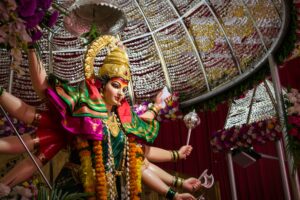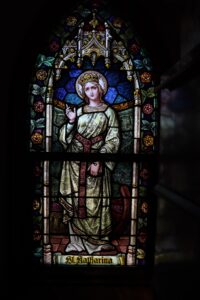History of Sacred Sexuality
What Is Sacred Sexuality?
Placing the words “sacred” and “sexuality” together creates a paradox for many people. Sex and the sacred have for the most part been separated, opposed and repressed by the major religions. But, this hasn’t always been the case… Practitioners of sacred sexuality approach their bodies as a temple permeated with the divine and sexual union as a form of sacred union. They celebrate love-making and see it as a gateway for connecting Mind, Body and Soul, which offers an opportunity to experience a state of ‘Oneness’.
Sex as Mysticism
Sacred Sexuality traditions date back thousands of years to the earliest known Earth Mother religions, followed by the Ancient Egyptians, Taoists, Tantrics, Toltecs, Aztecs, and more. The primary creation myths of all cultures symbolise two main energies – called Shiva / Shakti, Yin / Yang, Sun / Moon and Heaven / Earth, among others. A common theme is dissolving the sense of self into a ‘universal consciousness’ – liberation from the belief that we are matter, and that matter and spirit are divided.
Goddess Worship Worldwide
Historically a host of Gods and Goddesses existed, with many religions primarily worshipping the Magna Mater (Great Mother or Great Goddess). She appeared under different names, including Innana, Ishtar, Isis, Nu Kua, Freya, Kunapipi, Demeter, Aphrodite, Pallas Athena, Gaia, Cybele, Hathor and many more. One of the attributes that the Goddess has traditionally been associated with is sexuality. For example, the Greek Goddess Aphrodite was the Goddess of erotic love, beauty, art and harmony.
Goddess Worship, Fertility and Erotic Love
Our culture too often treats sex as either prosaic or profane, and it may be hard to imagine how it could have once been central to cultures in which sexuality was a defining role of the Goddess. These cultures had rituals to celebrate fertility at the start of the year (around the spring equinox), and both male and female principles were revered. Inanna, the Goddess of life and love of the Ancient Sumer civilisation (5000 – 2000 BC), is among the earliest-known great Goddesses. She took great joy in sexual relations.
Ancient Celebrations of Sexuality
In Rome the Floralia, began around 3rd century BC in honour of the Goddess Flora, was a riotous celebration of sexuality, life, dancing and music. The Lupercalia, which lasted well into the 5th century AD, was another erotic spring festival celebrated by the Romans. In Ancient Egypt, during the festival of the Coming Forth of Min (dating back thousands of years), his role in assuring fertility of grain was honoured with orgiastic celebration. The temple of the neighbouring Goddess Hathor was inundated with offerings of wooden phalluses.
Hieros Gamos (Sacred Marriage)
This usually took place at the core of the harvest festival and was a re-enactment of the holy intercourse between God and Goddess. The sacred marriage between priestess and living king was the most solemn and holy of all Mesopotamian and Ancient Egyptian religious rituals, and took place in the heart of the temple. Without this ritual, both the king and the pharaoh were not seen as fit to rule their people. These cultures celebrated sexuality in a way which revered its power.
Temple Sexual Worship
In many cultures, priestesses engaged in sacred sexual worship in temples. In India the temple priestesses were called “deva-dasi”, and this tradition thrived until its abolishment by legislators in 1950. In Mesopotamia (present day Iraq) Ishtar’s sacred priestesses came from the highest families in the land. The priestesses were treated with reverence. (This was not the case with prostitutes who worked in taverns for money!) Sacred sexual worship no longer exists in mainstream culture, and it may therefore be difficult to imagine or understand it as a concept.
 Aphrodite & Venus
Aphrodite & Venus
In Ancient Greece (5th-4th century BC) Aphrodite was also celebrated by the widespread ritual of sacred sexual worship, most famously in Cyprus and at Corinth. The Roman Goddess Venus was the patroness of gardens, vineyards, love, nature and priestesses. Her fading links with sacred sexual practices were honoured at the temple of Venus Erycina, just outside Rome. Its design copied that of the original temple to Venus on Mount Eryx in Sicily, a shrine where sacred sexual worship prospered for centuries.
Sexual Imagery in Churches And Temples
Thomas Wright published “The Worship of the Generative Powers During the Middle Ages of Western Europe” in 1866. He found that Roman phallic or vulvic images were prevalent across Europe, and discovered that many European churches had explicit sexual imagery built into them, often on portals. Many churches in Ireland displayed figures with very pronounced genitalia, termed the Sheela-ni-Gigs. Various temples around the world depicted explicit sexual imagery, too, such as in India.
Suppression of Sacred Sexuality
The development of agriculture and trade likely led to more acquisitive cultures, and the majority of Earth Mother cults were wiped out by around 4000 BC. As the role of women became less important, the links between sexuality and the sacred began to fade. A priestess who engaged in sacred sexual worship became a whore, a derivative of the Goddess Hora. Many temples were destroyed or defaced, along with the sexual imagery. For example, Christian invaders of Egypt hacked off the depictions of erections in temples.
The Green Man
The new religions of Christianity, Judaism and Islam who worshipped one male God instead of a pantheon of Gods and Goddesses sought to control male sexuality also. Despite this, the old fertility gods found their way back in – the Green Man was depicted in churches and cathedrals all over Europe. The erosion of paganism, and its celebration of fertility and sexual pleasure, took place over many centuries.
Christian Church: Shift in Values
The shift in values introduced by Christianity in the Roman Empire came at a cost: Eros, the life force, was hemmed in and held down. The Christian church often sees the body – flesh – as the enemy of the spirit. We are supposed to feel guilty and ashamed about our body. This message has been propagated for centuries, and many of us unconsciously accept it today. St Augustine was the most influential of the Church fathers. He contributed greatly to the culture of sex-negativity that still permeates the present day.
Attack on Goddess Worship and the Celebration of Sexuality
The early Church was concerned with stamping out traces of the old pagan religions, which were incompatible with the emerging doctrines. During nearly six centuries of the Inquisition in Europe, part of which involved Witch Hunting, anyone who allowed women elders and priests, rejected church hierarchy and embraced openness towards the spiritual potential of sexuality – the worst crime – became “heretics” and victims of the Inquisition. Sacred sexual secrets went underground.
Where Does that Leave Sacred Sexuality Today?
Our sexuality – the energy source of life – is often misunderstood and trivialised. Sex is now big business, but the models of sexuality presented to us are often demeaning. The sacred mystery has largely been lost and with it the power to uplift and to create a gateway to higher consciousness. Contemporary Western culture lacks a strong image of the feminine in the sacred. However, sacred sexuality is moving back into the mainstream through internet sites and workshops on these topics. We are becoming more of a sex positive culture.
Tantric Massage and Sacred Sexuality
Tantric sessions aim to bring the sacred back into sexuality, by revering the life force energy. This positive way of looking at it can help overcome shame and relax more into enjoyment of both the body and the feelings of sexual energy.